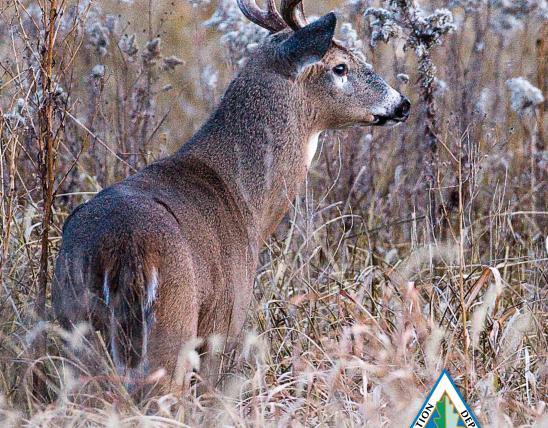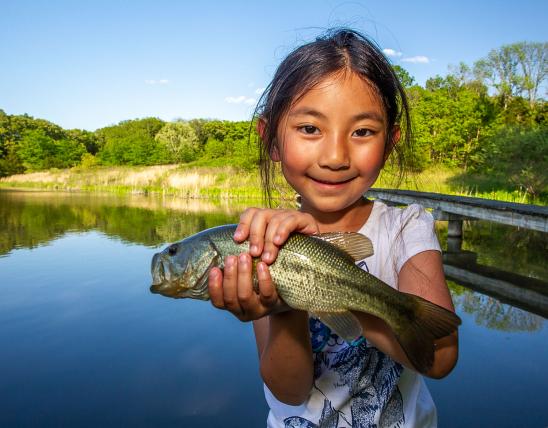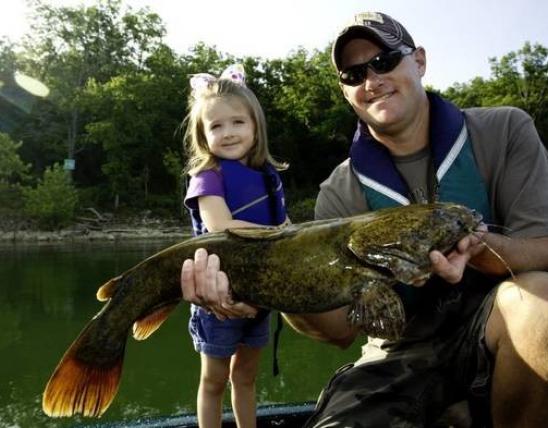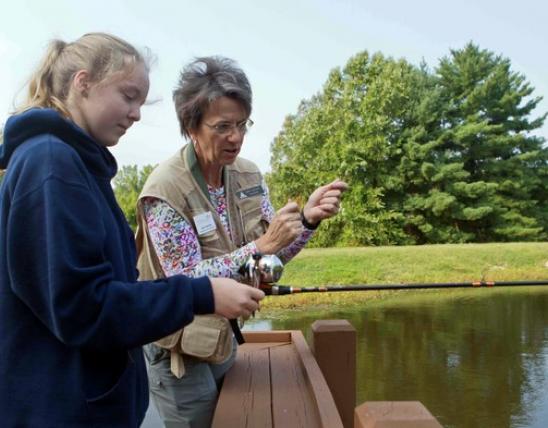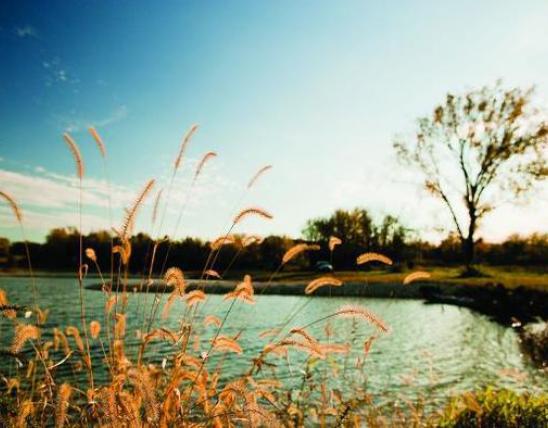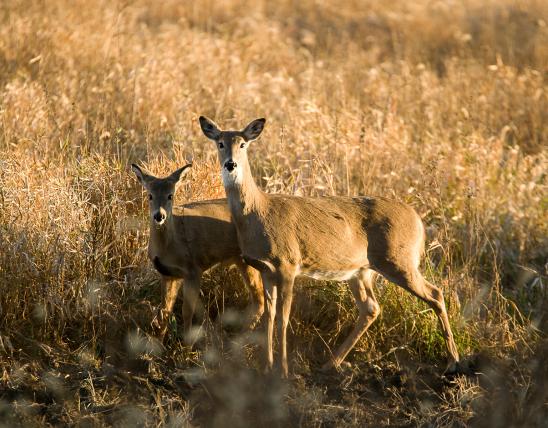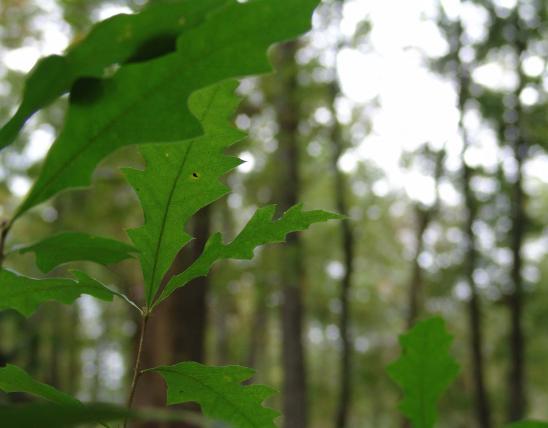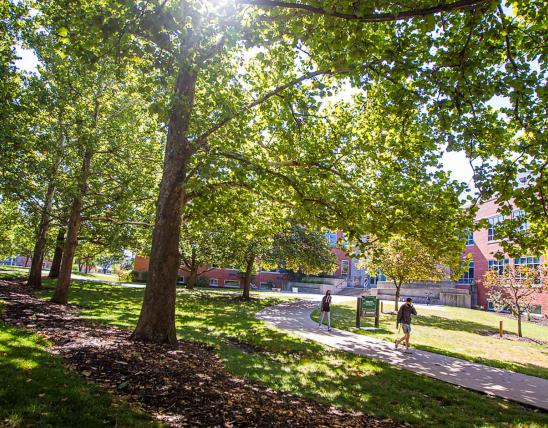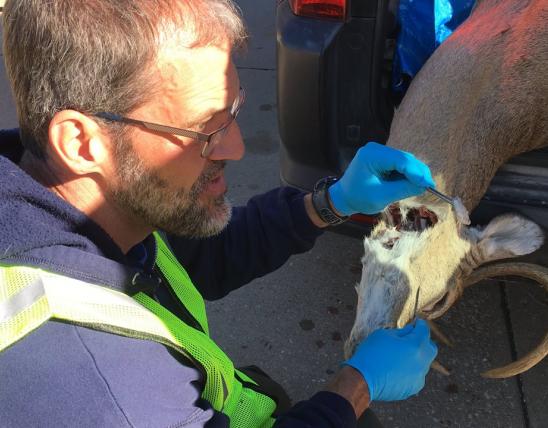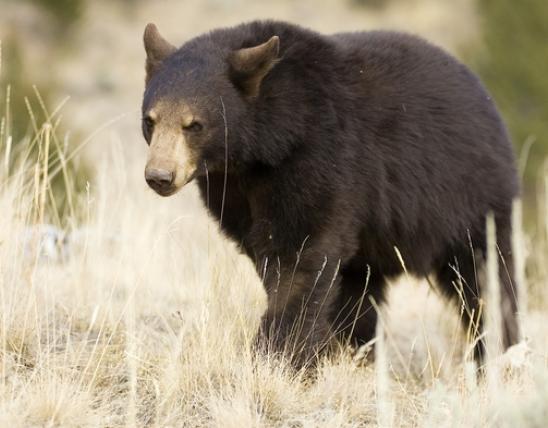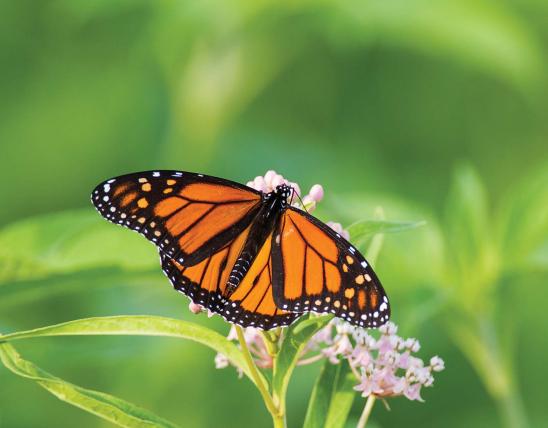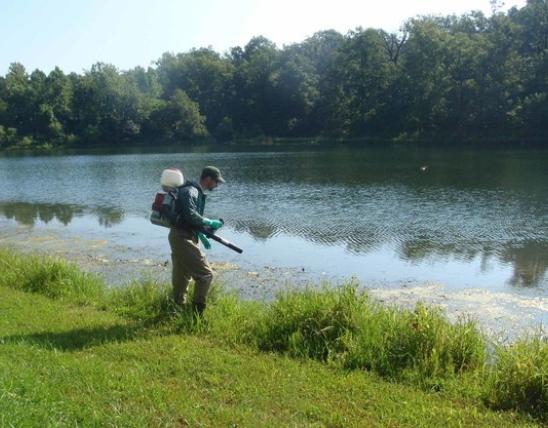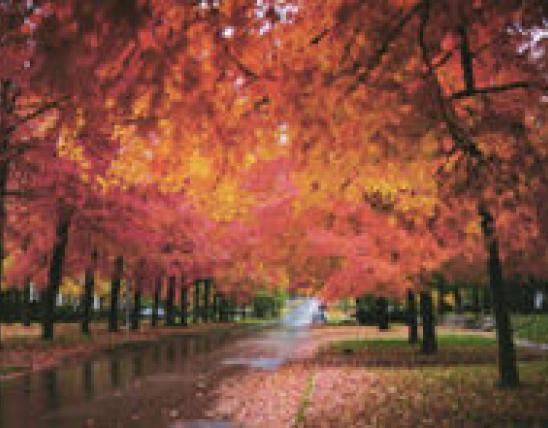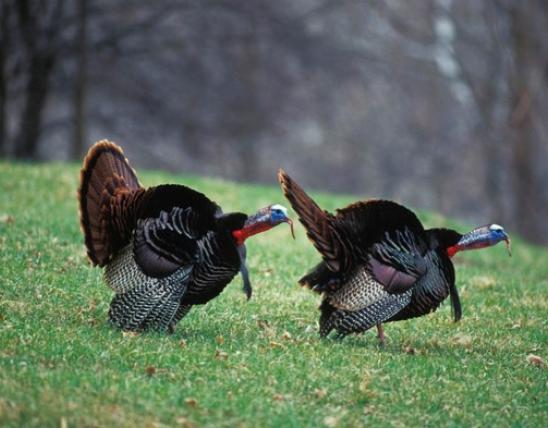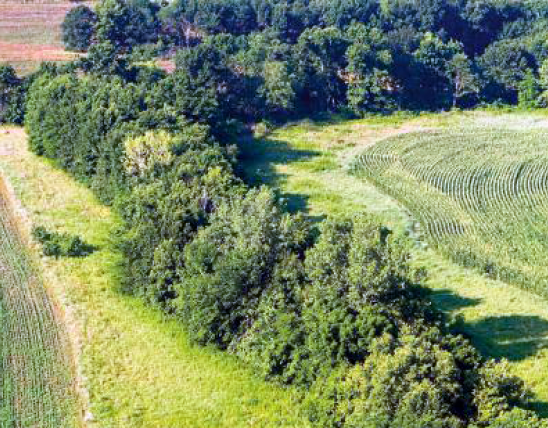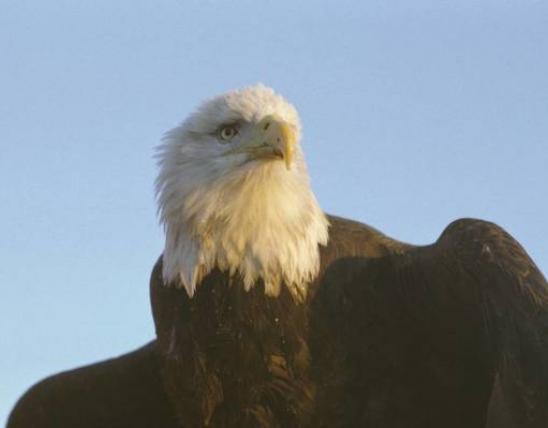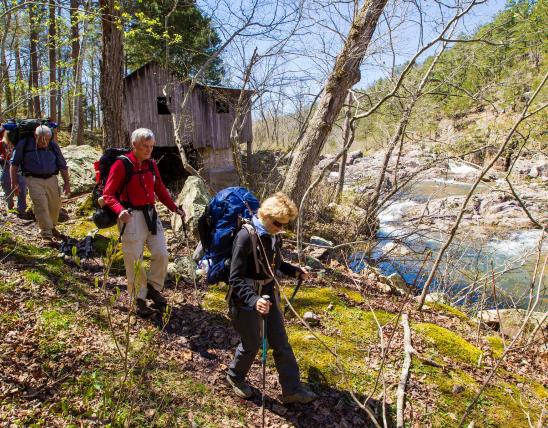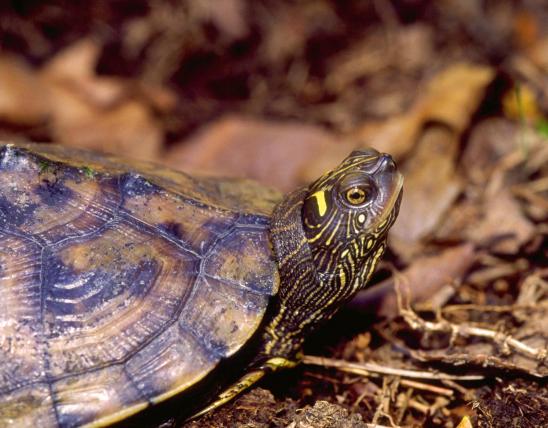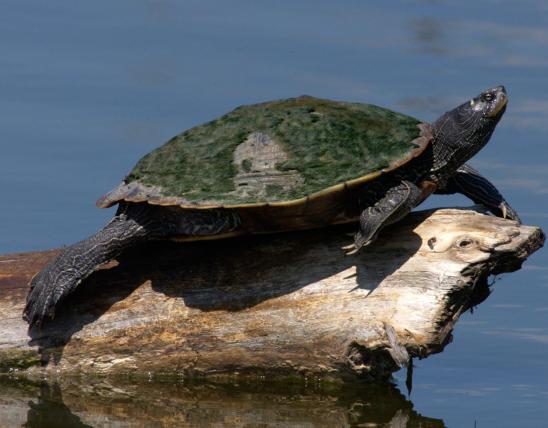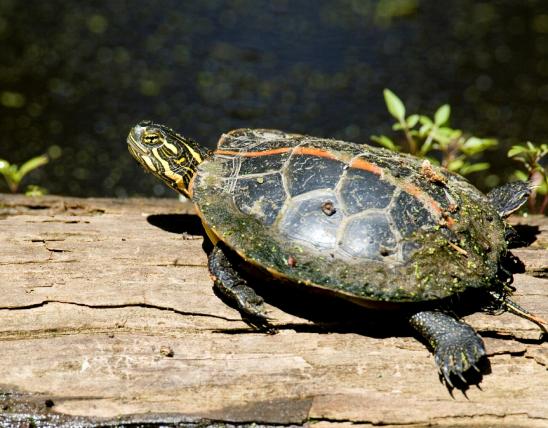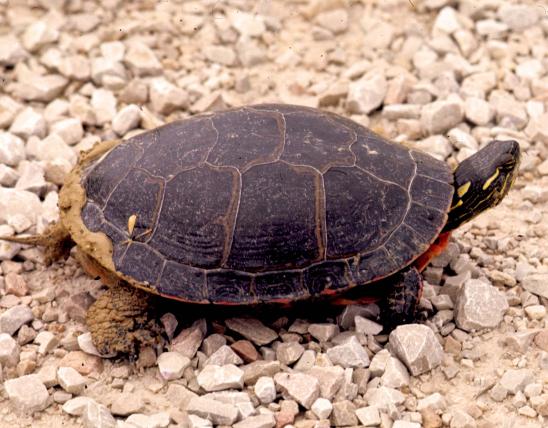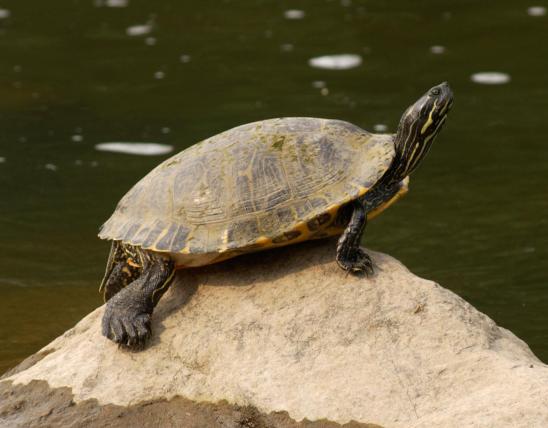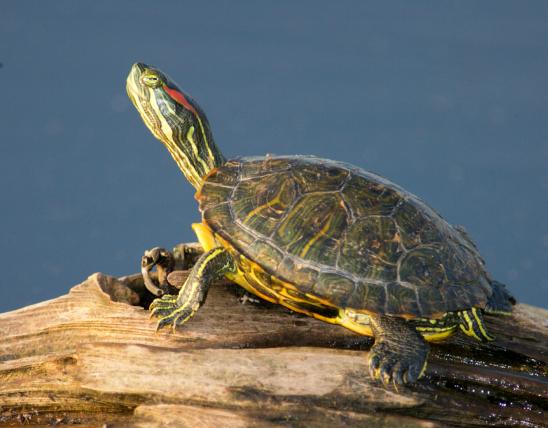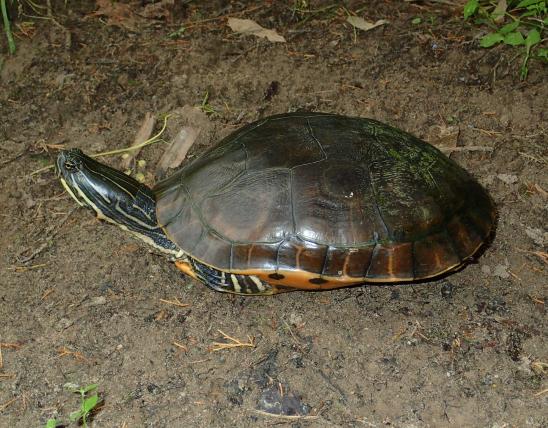The Ouachita map turtle is a medium-sized aquatic turtle with a dark, raised keel along the center of the carapace (upper shell), forming a ridge. The rear of the carapace is strongly serrated (jagged or saw-toothed). The carapace is olive green with usually one dark brown or black smudge or blotch per scute (shell scale). As with other map turtles, the carapace is covered with narrow, irregular yellow lines, which somewhat resemble a road map. The head, neck, limbs, and tail are dark brown or olive drab with numerous yellow lines or markings.
Ouachita map turtles have a large, wide yellow marking behind each eye that is widest just behind the eye and becomes narrow on the top of the head. Neck stripes may or may not come in contact with the lower part of each eye. A large yellow spot is found under each eye and another directly below on the lower jaw.
The eyes are cream to white and usually have a thin black horizontal line across the pupil. The plastron (lower shell) is flat and plain yellow with a faint gray streak along the seams of the scutes. These streaks are more pronounced on young turtles.
Similar species: To identify our three map turtles, look at the yellow spots near the eye. Northern map turtles have a small, yellow marking behind each eye that usually has a slight projection that is oriented toward the neck. False map turtles have a thick yellow line behind each eye that extends upward, then backward, forming a backward L shape (these markings are variable, however).
In central and eastern Missouri, the Ouachita map turtle hybridizes with the northern false map turtle, and their offspring might display a blend of their parents' characteristics.
As with other map turtles, female Ouachita map turtles are larger than males. Adult upper shell length: 3 to 5½ inches (males); up to 9½ inches in females.
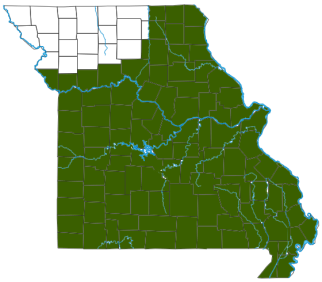
Occurs in southern and eastern Missouri and along the Mississippi and St. Francis rivers in the Bootheel. The larger North American range extends northward from Louisiana and Arkansas along the Mississippi River, and eastward and westward along its major tributaries, with isolated populations in Kansas and Ohio.
Habitat and Conservation
Generally, this species has habitat needs and life history similar to the northern false map turtle (G. p. pseudogeographica), with which it used to be considered a sister subspecies: living in the main channels of large rivers during the active season, and overwintering underwater, in the mud at the bottom of lakes or other sluggish waters, likely among rocks, tree debris, and undercut banks.
Like the northern false map turtle, the Ouachita map turtle is considered principally a species of large rivers. But it has been observed upstream in many tributaries and reservoirs throughout much of its range. It is sporadically captured throughout smaller Ozark rivers and streams. It apparently prefers the faster portions of rivers and streams.
Like other species of map turtles, the Ouachita map turtle can be observed basking on logs over the water. They are rarely seen on land.
Food
Ouachita map turtles have a more varied diet than other map turtle species. In general, their food includes aquatic insects, snails, crayfish, dead fish, and occasionally aquatic plants.
The diet varies depending on the habitat type, and what kinds of foods are available or abundant. Those living in rivers and other places with moving water tend to eat different foods than those living in lakes or other still-water habitats. For example, in rivers with sandy, sterile bottoms, principal foods may be land insects that fall or are washed into the water, while in lakes with muddy bottoms, they might feed most heavily on midge larvae.
Status
This species was formerly classified as a subspecies of the false map turtle. In 1993, it was elevated to a full species. It hybridizes with the northern false map turtle (G. p. pseudogeographica) in central and eastern Missouri. Little is known about the ecology and population status of this species in Missouri. In research efforts across two decades, capture rates of this species are considerably lower in Missouri compared to some other states. Additional studies are needed to better understand the ecology, behavior, and status of this species in Missouri.
Life Cycle
Information on the reproductive biology of this species in Missouri is lacking. They breed in the water from early April through May. There may be some occasional mating in late September into November. From May into July, females move into land to lay eggs in open areas where there is loose soil or sand; 6–15 eggs may be produced per female. Each female will lay 2 or 3 clutches per season. Gravid females usually dig their nests after sunset or just before sunrise in the morning. They have also been seen nesting on cloudy days or just after a heavy rain.
Well-developed embryos within days of hatching and recent hatchlings have been known to make sounds within the nest. Their use of various sounds, especially clicking, might be a form of communication among siblings to begin hatching. Hatching occurs in late summer or early fall. Rarely, if ever, do Ouachita map turtles overwinter in the nest.
Male Ouachita map turtles become sexually mature at two to three years of age. Females, on average, will be sexually mature between six and seven years old.
Human Connections
The species name, "ouachitensis," means "from the Ouachitas." Ouachita is pronounced WAH-shi-taw; it’s a mountain range in western Arkansas and southeastern Oklahoma. The Ouachita Mountains are the source of the Ouachita River, which flows southward from Arkansas into Louisiana. The Ouachita Mountains are closely associated with the Ozark Plateau; together, the Ouachitas and Ozarks constitute the Interior Highlands of the United States. The landscapes of the Interior Highlands are dear to most Missourians and are a major tourist draw, with the Ozarks' magnificent bluffs, caves, springs, clear-flowing rivers, and reservoirs; forests dominated with oaks, hickories, and shortleaf pine; and plentiful opportunities for fishing, hunting, hiking, camping, canoeing, scenic driving, and more.
Caring properly for our natural habitats will help protect the Ouachita map turtle and many other animal and plant species native to these places, while also preserving the beautiful landscapes we love.
Ecosystem Connections
As predators, map turtles help control the populations of the animals they consume. Map turtles are also a prey species, despite their shells. Eggs and hatchlings can become easy prey for a raccoon, snake, heron, or other predatory animals large enough to swallow them. Newly laid nests are particularly vulnerable to predation by raccoons, skunks, and foxes.
The Ouachita map turtle is a member of family Emydidae (the pond and box turtle family). This is one of the largest families of living turtles in the world. It comprises 12 genera, containing 52 species. In general, turtles in this family are small to medium sized and are adapted to a variety of habitats. This family includes several colorful species. Although the majority of species are aquatic (such as the eastern river cooter), several kinds are either semiaquatic or have taken to life on land (for example, the box turtles). In Missouri, this family is represented by 7 genera with a total of 11 species and 1 additional subspecies.

